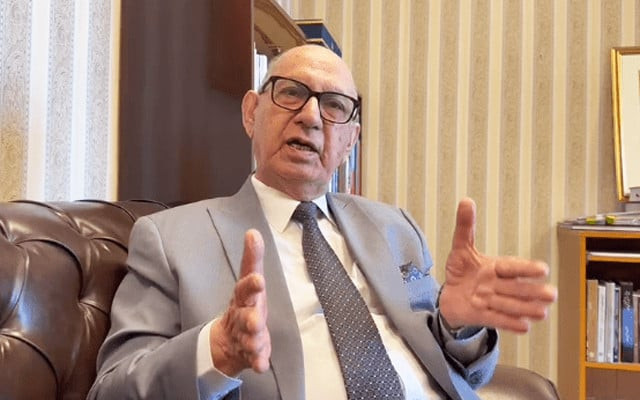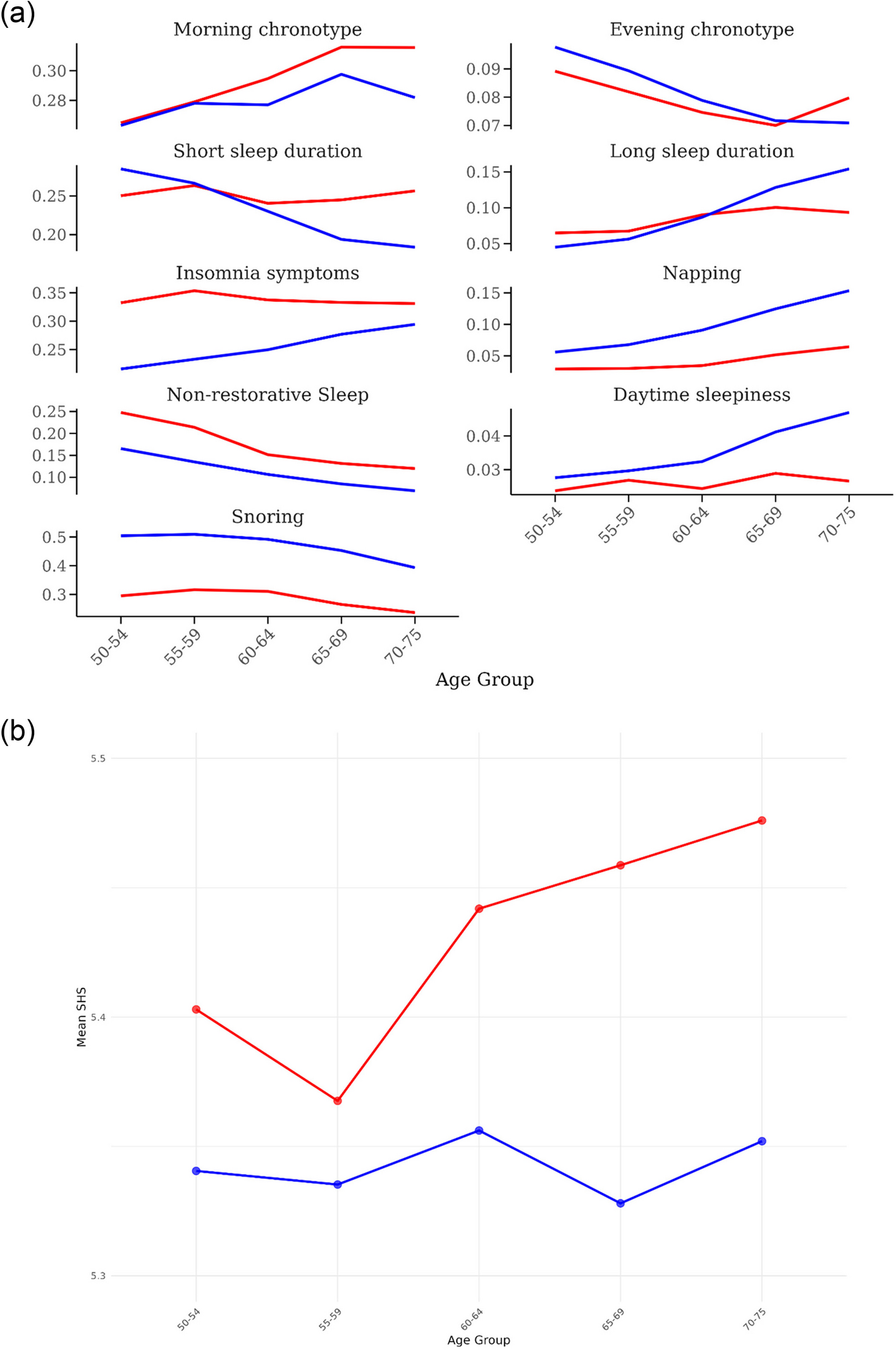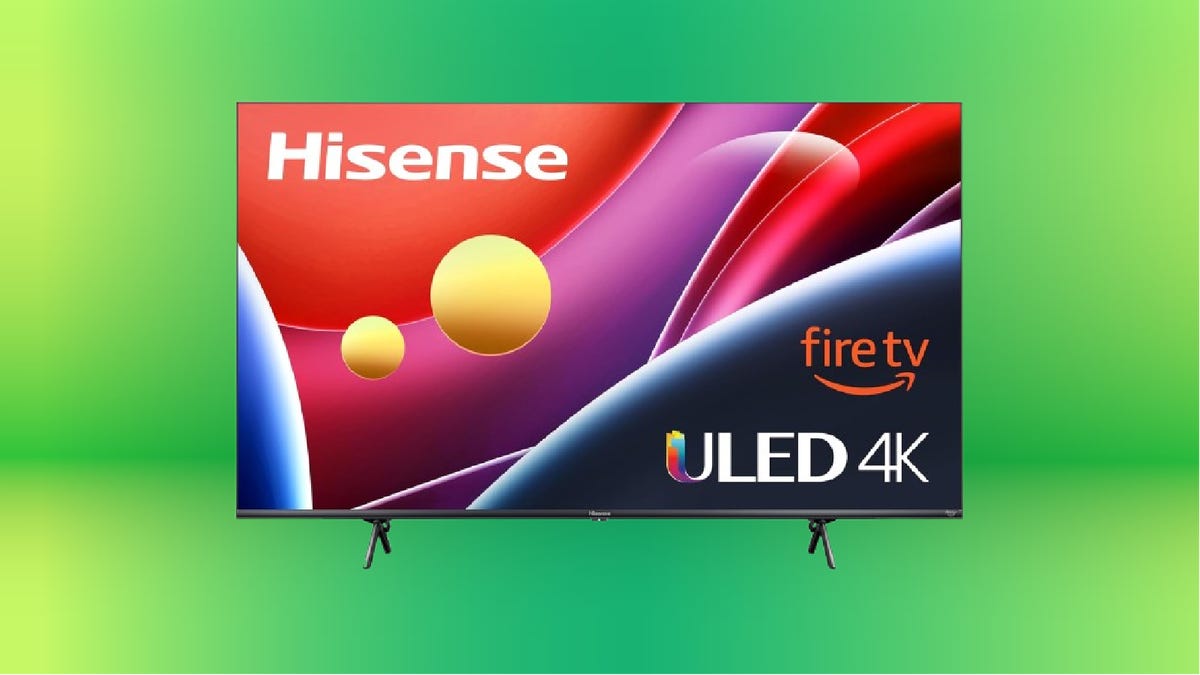Shi L, Chen SJ, Ma MY, Bao YP, Han Y, Wang YM, et al. Sleep disturbances increase the risk of dementia: a systematic review and meta-analysis. Sleep Med Rev. 2018;40:4–16.
Article
PubMed
Google Scholar
Xu W, Tan CC, Zou JJ, Cao XP, Tan L. Sleep problems and risk of all-cause cognitive decline or dementia: an updated systematic review and meta-analysis. J Neurol Neurosurg Psychiatry. 2020;91(3):236–44.
Article
PubMed
Google Scholar
Guay-Gagnon M, Vat S, Forget MF, Tremblay-Gravel M, Ducharme S, Nguyen QD, et al. Sleep apnea and the risk of dementia: a systematic review and meta-analysis. J Sleep Res. 2022;31(5): e13589.
Article
PubMed
Google Scholar
Guo C, Harshfield EL, Markus HS. Sleep characteristics and risk of stroke and dementia: an observational and Mendelian randomization study. Neurology. 2024;102(5): e209141.
Article
PubMed
PubMed Central
Google Scholar
Gao Y, Andrews S, Daghlas I, Brenowitz WD, Raji CA, Yaffe K, et al. Snoring and risk of dementia: a prospective cohort and Mendelian randomization study. Sleep. 2024.
Huang SY, Li YZ, Zhang YR, Huang YY, Wu BS, Zhang W, et al. Sleep, physical activity, sedentary behavior, and risk of incident dementia: a prospective cohort study of 431,924 UK Biobank participants. Mol Psychiatry. 2022;27(10):4343–54.
Article
PubMed
Google Scholar
Wong ATY, Reeves GK, Floud S. Total sleep duration and daytime napping in relation to dementia detection risk: results from the Million Women Study. Alzheimers Dement. 2023;19(11):4978–86.
Article
PubMed
Google Scholar
Himali JJ, Baril AA, Cavuoto MG, Yiallourou S, Wiedner CD, Himali D, et al. Association between slow-wave sleep loss and incident dementia. JAMA Neurol. 2023;80(12):1326–33.
Article
PubMed
PubMed Central
Google Scholar
Buysse DJ. Sleep health: can we define it? Does it matter? Sleep. 2014;37(1):9–17.
Article
PubMed
PubMed Central
Google Scholar
Chung J, Goodman M, Huang T, Bertisch S, Redline S. Multidimensional sleep health in a diverse, aging adult cohort: concepts, advances, and implications for research and intervention. Sleep Health. 2021;7(6):699–707.
Article
PubMed
PubMed Central
Google Scholar
Nyhuis CC, Fernandez-Mendoza J. Insomnia nosology: a systematic review and critical appraisal of historical diagnostic categories and current phenotypes. J Sleep Res. 2023;32(6): e13910.
Article
PubMed
PubMed Central
Google Scholar
Keenan BT, Kim J, Singh B, Bittencourt L, Chen NH, Cistulli PA, et al. Recognizable clinical subtypes of obstructive sleep apnea across international sleep centers: a cluster analysis. Sleep. 2018;41(3).
Vgontzas AN, Fernandez-Mendoza J, Liao D, Bixler EO. Insomnia with objective short sleep duration: the most biologically severe phenotype of the disorder. Sleep Med Rev. 2013;17(4):241–54.
Article
PubMed
PubMed Central
Google Scholar
Fernandez-Mendoza J. The insomnia with short sleep duration phenotype: an update on it’s importance for health and prevention. Curr Opin Psychiatry. 2017;30(1):56–63.
Article
PubMed
Google Scholar
Sweetman A, Lack L, Bastien C. Co-morbid insomnia and sleep apnea (COMISA): prevalence, consequences, methodological considerations, and recent randomized controlled trials. Brain Sci. 2019;9(12).
Luyster FS, Baniak LM, Imes CC, Jeon B, Morris JL, Orbell S, et al. Association of comorbid obstructive sleep apnea and insomnia with risk of major adverse cardiovascular events in sleep medicine center patients. Sleep Health. 2024;10(3):335–41.
Article
PubMed
Google Scholar
Evans MA, Buysse DJ, Marsland AL, Wright AGC, Foust J, Carroll LW, et al. Meta-analysis of age and actigraphy-assessed sleep characteristics across the lifespan. Sleep. 2021;44(9).
Zhang B, Wing YK. Sex differences in insomnia: a meta-analysis. Sleep. 2006;29(1):85–93.
Article
PubMed
Google Scholar
Huang T, Lin BM, Markt SC, Stampfer MJ, Laden F, Hu FB, et al. Sex differences in the associations of obstructive sleep apnoea with epidemiological factors. Eur Respir J. 2018;51(3).
Wilkinson T, Schnier C, Bush K, Rannikmäe K, Henshall DE, Lerpiniere C, et al. Identifying dementia outcomes in UK Biobank: a validation study of primary care, hospital admissions and mortality data. Eur J Epidemiol. 2019;34(6):557–65.
Article
PubMed
PubMed Central
Google Scholar
Linzer DA, Lewis JB. poLCA: an R package for polytomous variable latent class analysis. J Stat Softw. 2011;42:1–29.
Article
Google Scholar
Weller BE, Bowen NK, Faubert SJ. Latent class analysis: a guide to best practice. J Black Psychol. 2020;46(4):287–311.
Article
Google Scholar
Rojas-Saunero LP, Young JG, Didelez V, Ikram MA, Swanson SA. Considering questions before methods in dementia research with competing events and causal goals. Am J Epidemiol. 2023;192(8):1415–23.
Article
PubMed
PubMed Central
Google Scholar
Fine JP, Gray RJ. A proportional hazards model for the subdistribution of a competing risk. J Am Stat Assoc. 1999;94(446):496–509.
Article
Google Scholar
Ju YE, Lucey BP, Holtzman DM. Sleep and Alzheimer disease pathology–a bidirectional relationship. Nat Rev Neurol. 2014;10(2):115–9.
Article
CAS
PubMed
Google Scholar
Leng Y, McEvoy CT, Allen IE, Yaffe K. Association of sleep-disordered breathing with cognitive function and risk of cognitive impairment: a systematic review and meta-analysis. JAMA Neurol. 2017;74(10):1237–45.
Article
PubMed
PubMed Central
Google Scholar
Irwin MR, Vitiello MV. Implications of sleep disturbance and inflammation for Alzheimer’s disease dementia. Lancet Neurol. 2019;18(3):296–306.
Article
CAS
PubMed
Google Scholar
Livingston G, Huntley J, Liu KY, Costafreda SG, Selbæk G, Alladi S, et al. Dementia prevention, intervention, and care: 2024 report of the Lancet standing Commission. Lancet. 2024;404(10452):572–628.
Article
PubMed
Google Scholar
Mazzotti DR, Keenan BT, Lim DC, Gottlieb DJ, Kim J, Pack AI. Symptom subtypes of obstructive sleep apnea predict incidence of cardiovascular outcomes. Am J Respir Crit Care Med. 2019;200(4):493–506.
Article
CAS
PubMed
PubMed Central
Google Scholar
Allen AJH, Jen R, Mazzotti DR, Keenan BT, Goodfellow SD, Taylor CM, et al. Symptom subtypes and risk of incident cardiovascular and cerebrovascular disease in a clinic-based obstructive sleep apnea cohort. J Clin Sleep Med. 2022;18(9):2093–102.
Article
PubMed
PubMed Central
Google Scholar
Redline S, Azarbarzin A, Peker Y. Obstructive sleep apnoea heterogeneity and cardiovascular disease. Nat Rev Cardiol. 2023;20(8):560–73.
Article
CAS
PubMed
Google Scholar
Huang T, Goodman M, Li X, Sands SA, Li J, Stampfer MJ, et al. C-reactive protein and risk of OSA in four US cohorts. Chest. 2021;159(6):2439–48.
Article
CAS
PubMed
PubMed Central
Google Scholar
Huang T, Sands SA, Stampfer MJ, Tworoger SS, Hu FB, Redline S. Insulin resistance, hyperglycemia, and risk of developing obstructive sleep apnea in men and women in the United States. Ann Am Thorac Soc. 2022;19(10):1740–9.
Article
PubMed
PubMed Central
Google Scholar
Brown J, Yazdi F, Jodari-Karimi M, Owen JG, Reisin E. Obstructive sleep apnea and hypertension: updates to a critical relationship. Curr Hypertens Rep. 2022;24(6):173–84.
Article
CAS
PubMed
PubMed Central
Google Scholar
Huang T, Goodman M, Wang H, Sofer T, Tworoger SS, Stampfer MJ, et al. Genetic predisposition to elevated C-reactive protein and risk of obstructive sleep apnea. Am J Respir Crit Care Med. 2024;209(3):329–31.
Article
PubMed
Google Scholar
Taylor BJ, Hasler BP. Chronotype and mental health: recent advances. Curr Psychiatry Rep. 2018;20(8):59.
Article
PubMed
Google Scholar
Hood S, Amir S. The aging clock: circadian rhythms and later life. J Clin Invest. 2017;127(2):437–46.
Article
PubMed
PubMed Central
Google Scholar
Gottesman RF, Lutsey PL, Benveniste H, Brown DL, Full KM, Lee JM, et al. Impact of sleep disorders and disturbed sleep on brain health: a scientific statement from the American Heart Association. Stroke. 2024;55(3):e61–76.
Article
PubMed
Google Scholar
Eisenmenger LB, Peret A, Famakin BM, Spahic A, Roberts GS, Bockholt JH, et al. Vascular contributions to Alzheimer’s disease. Transl Res. 2023;254:41–53.
Article
CAS
PubMed
Google Scholar
Kianersi S, Wang H, Sofer T, Noordam R, Phillips A, Rutter MK, et al. Association between accelerometer-measured irregular sleep duration and type 2 diabetes risk: a prospective cohort study in the UK Biobank. Diabetes Care. 2024;47(9):1647–55.
Article
CAS
PubMed
Google Scholar
Huang T, Mariani S, Redline S. Sleep irregularity and risk of cardiovascular events: the multi-ethnic study of atherosclerosis. J Am Coll Cardiol. 2020;75(9):991–9.
Article
PubMed
PubMed Central
Google Scholar
Yiallourou SR, Cribb L, Cavuoto MG, Rowsthorn E, Nicolazzo J, Gibson M, et al. Association of the sleep regularity index with incident dementia and brain volume. Neurology. 2024;102(2): e208029.
Article
PubMed
Google Scholar
Kianersi S, Redline S, Mongraw-Chaffin M, Huang T. Associations of slow-wave sleep with prevalent and incident type 2 diabetes in the multi-ethnic study of atherosclerosis. J Clin Endocrinol Metab. 2023;108(10):e1044–55.
Article
CAS
PubMed
PubMed Central
Google Scholar
Azarbarzin A, Sands SA, Stone KL, Taranto-Montemurro L, Messineo L, Terrill PI, et al. The hypoxic burden of sleep apnoea predicts cardiovascular disease-related mortality: the Osteoporotic Fractures in Men Study and the Sleep Heart Health Study. Eur Heart J. 2019;40(14):1149–57.
Article
PubMed
Google Scholar
Yaffe K, Laffan AM, Harrison SL, Redline S, Spira AP, Ensrud KE, et al. Sleep-disordered breathing, hypoxia, and risk of mild cognitive impairment and dementia in older women. JAMA. 2011;306(6):613–9.
Article
CAS
PubMed
PubMed Central
Google Scholar
Huang X, Zhang Z, Lan X, Song X, Dong Y, Jia S, et al. The association between hypoxic burden and the risk of cognitive impairment in patients with obstructive sleep apnea. Sleep. 2024.
Baden MY, Hu FB, Vetter C, Schernhammer E, Redline S, Huang T. Sleep duration patterns in early to middle adulthood and subsequent risk of type 2 diabetes in women. Diabetes Care. 2020;43(6):1219–26.
Article
CAS
PubMed
PubMed Central
Google Scholar
Sabia S, Fayosse A, Dumurgier J, van Hees VT, Paquet C, Sommerlad A, et al. Association of sleep duration in middle and old age with incidence of dementia. Nat Commun. 2021;12(1):2289.
Article
CAS
PubMed
PubMed Central
Google Scholar
Anderson EL, Richmond RC, Jones SE, Hemani G, Wade KH, Dashti HS, et al. Is disrupted sleep a risk factor for Alzheimer’s disease? Evidence from a two-sample Mendelian randomization analysis. Int J Epidemiol. 2021;50(3):817–28.
Article
PubMed
Google Scholar
Cavaillès C, Andrews SJ, Leng Y, Chatterjee A, Daghlas I, Yaffe K. Causal associations of sleep apnea with Alzheimer disease and cardiovascular disease: a bidirectional Mendelian randomization analysis. J Am Heart Assoc. 2024;13(18): e033850.
Article
PubMed
PubMed Central
Google Scholar
van Alten S, Domingue BW, Faul J, Galama T, Marees AT. Reweighting UK Biobank corrects for pervasive selection bias due to volunteering. Int J Epidemiol. 2024;53(3).
Huang J, Zuber V, Matthews PM, Elliott P, Tzoulaki J, Dehghan A. Sleep, major depressive disorder, and Alzheimer disease: a Mendelian randomization study. Neurology. 2020;95(14):e1963–70.
Article
PubMed
PubMed Central
Google Scholar
Cribb L, Moreno-Betancur M, Wu Z, Wolfe R, Pasé M, Ryan J. Moving beyond the prevalent exposure design for causal inference in dementia research. Lancet Healthy Longev. 2025;6(2): 100675.
Article
PubMed
Google Scholar








